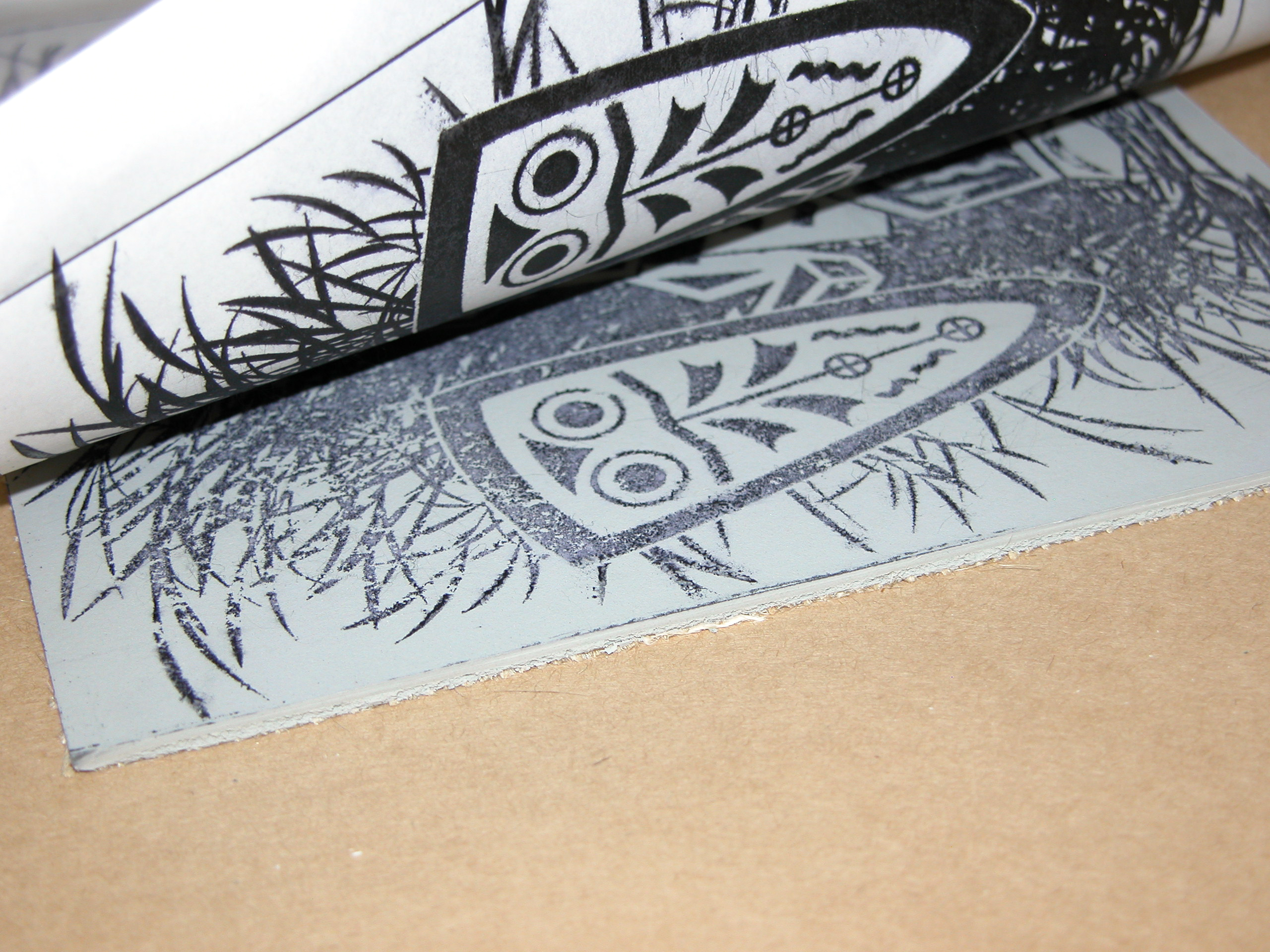Linoleum printing is a form of relief printing, one of the easiest and most direct of all the printmaking methods. Linocuts can be simplistic and graphic, or as intricately detailed as you want. It’s a subtractive process, meaning you cut away, or subtract, the areas you do not want to print. They can be printed onto almost any type of paper or fabric. You can print on top of painted or silk-screened backgrounds, or you can use watercolor paints or colored pencils to hand-color the print after it has dried.
When printing with a soft block of linoleum the edges will round a bit, giving a softer look to your image. Softer linoleums also reduce the number of prints you can pull before the block starts to deteriorate. The harder linoleums allow a lot of detail, but they are more difficult to cut. They also hold up to a longer print run. I like to use battleship linoleum because it is firm enough to allow for good detail but soft enough that it won’t strain my hand to carve it. You can soften it slightly by using a heating pad underneath it while carving.
There are several different types of linoleum you can use for linocuts, each with its own characteristics. Linoleum is typically 1″ thick and comes either unmounted with a canvas backing or mounted onto a block of wood. You can buy it from art supply companies or your local arts and crafts store. The softer varieties are easier to carve but they won’t hold as much detail as the harder blocks.



























